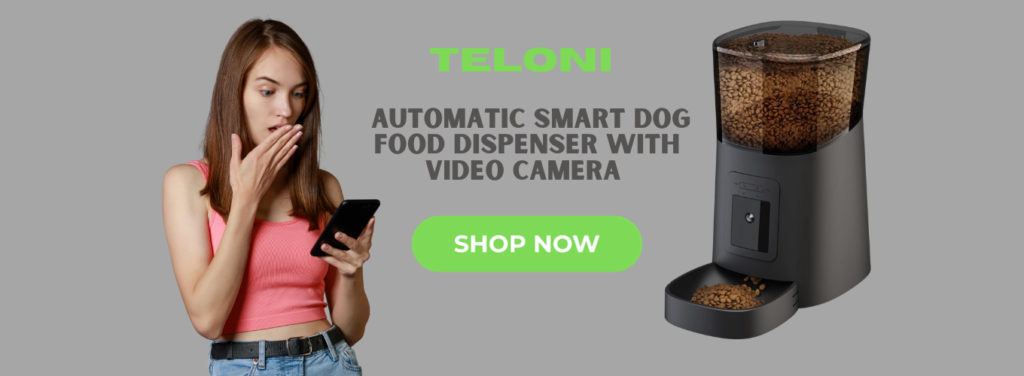
Positive reinforcement techniques for leash training
Leash training is a crucial aspect of owning a dog, as it ensures their safety and promotes good behavior during walks. However, leash training can sometimes be a challenging and frustrating process. Fortunately, positive reinforcement techniques provide a highly effective and humane approach to leash training. By using positive reinforcement, you can teach your dog to walk politely on a leash while strengthening the bond between you and your furry companion. In this article, we will explore various positive reinforcement techniques and strategies that can help you achieve successful leash training outcomes. Whether you are a new dog owner or looking to improve your leash training skills, this guide will provide you with valuable insights to make your leash training experience positive, rewarding, and enjoyable for both you and your dog.
1. Introduction to leash training
1.1 Overview of leash training
Leash training is an essential skill for both dogs and their owners. It allows dogs to explore the world while keeping them safe and under control. Whether you have a new pup or an older dog who needs a refresher, leash training is an ongoing process that requires patience and consistency.
1.2 Importance of positive reinforcement in leash training
Positive reinforcement is a powerful tool in leash training. By rewarding desired behaviors, such as walking calmly on a leash, you can encourage your dog to repeat those behaviors in the future. This method of training focuses on rewarding good behavior instead of punishing unwanted behavior, creating a positive and enjoyable experience for both you and your furry friend.
2. Understanding positive reinforcement

2.1 Definition and principles of positive reinforcement
Positive reinforcement involves rewarding your dog for performing the desired behavior. This can be done through treats, praise, or even playtime. By associating the behavior with a positive outcome, your dog will be motivated to continue behaving in that manner.
The principles of positive reinforcement include timing, consistency, and clarity. It’s crucial to reward your dog immediately after they exhibit the desired behavior, so they understand what they are being rewarded for. Consistency is key to reinforce the behavior consistently, and clarity in your communication ensures your dog understands what you expect from them.
2.2 Benefits of using positive reinforcement in leash training
Positive reinforcement creates a positive connection between your dog and the leash training process. It fosters a bond of trust and makes the training experience enjoyable for your furry friend. Additionally, positive reinforcement techniques are effective in teaching your dog new behaviors, as they are more likely to repeat actions that have resulted in rewards.
Using positive reinforcement also helps to build a strong and positive relationship between you and your dog. It encourages better communication and understanding, leading to a happier and more harmonious partnership.
3. Selecting the right equipment for leash training
3.1 Types of leashes and harnesses
When it comes to leash training, choosing the right equipment is essential. There are various types of leashes and harnesses available, each serving a specific purpose. Traditional leashes, retractable leashes, and front-clip harnesses are some common options. Research and consider the needs of your dog to determine which equipment will be the most suitable.
3.2 Choosing the appropriate leash and harness for your dog
The size, temperament, and behavior of your dog should guide your decision when selecting a leash and harness. For example, if you have a strong-pulling dog, a front-clip harness can provide better control and discourage pulling. It’s important to ensure that the equipment you choose is comfortable for your dog and does not cause any discomfort or restrictions.
4. Establishing a positive training environment
4.1 Creating a calm and distraction-free space for training
Setting up a calm and distraction-free training environment is crucial for leash training success. Find a quiet area where you and your dog can focus without being overwhelmed by noises or other dogs. Minimizing distractions will allow you to give your dog your full attention and make the learning process more effective.

4.2 Building trust and rapport with your dog
Building trust and rapport with your dog is essential for successful leash training. Spend quality time with your furry friend, engage in playtime, and use positive reinforcement techniques even outside of training sessions. The more your dog feels connected and comfortable with you, the more they will be motivated to follow your lead and behave well on the leash. Remember to be patient, as trust takes time to build, but the results will be worth it.
Leash training can be a fun and rewarding experience for both you and your dog. By utilizing positive reinforcement techniques, selecting the right equipment, and establishing a positive training environment, you are setting yourselves up for success. So, grab your leash, put on your happy face, and embark on this exciting training journey with your furry companion!
5. Teaching basic leash manners through positive reinforcement
5.1 Teaching your dog to walk on a loose leash
Walking your dog should be an enjoyable experience for both of you, but it can quickly turn into a frustrating tug-of-war if your furry friend is constantly pulling on the leash. To teach them to walk on a loose leash, positive reinforcement is key.
Start by using a standard leash and some tasty treats. Begin walking with your dog and as soon as they start pulling, stop in your tracks. Wait for them to come back towards you or for the tension on the leash to loosen. As soon as the leash is loose, reward them with a treat and continue walking. Repeat this process consistently, rewarding your dog every time they maintain a loose leash.
5.2 Teaching the “heel” command
Once your dog has mastered walking on a loose leash, you can take their leash training to the next level by teaching them the “heel” command. This command is useful for situations where you want your dog to walk beside you, paying attention to you and matching your pace.
To teach the “heel” command, start by holding a treat close to your dog’s nose and walk forward. As your dog starts following the treat, say the command “heel” in a clear and positive tone. Whenever they are walking right beside you, reward them with the treat and praise. Gradually increase the distance and duration of your walks while maintaining the “heel” position, rewarding your dog for their good behavior along the way.
6. Addressing common challenges and troubleshooting tips

6.1 Dealing with pulling on the leash
We’ve all experienced the frustration of a dog that constantly pulls on the leash, making walks feel like an arm-stretching workout. To address this challenge, try using positive reinforcement techniques.
One effective method is to stop and wait whenever your dog pulls on the leash. By stopping, you remove any forward momentum and make it clear that pulling does not lead to progress. Once your dog releases tension and returns to your side, reward them with treats and praise. Consistency is key in reinforcing the desired behavior of walking on a loose leash.
6.2 Managing leash-reactive behavior
Leash-reactive behavior, such as barking or lunging at other dogs or people, can make walks stressful and unpleasant. To manage this behavior, it’s important to work on desensitization and counterconditioning.
Start by keeping a safe distance from triggers that cause reactive behavior in your dog. As soon as your dog notices the trigger but remains calm, reward them with treats and praise. Gradually decrease the distance between your dog and the trigger over time, making sure to always reward calm behavior. Remember, it’s important to set realistic expectations and work at your dog’s pace to ensure success.
7. Gradually increasing distractions for leash training success
7.1 Introducing controlled distractions during walks
Once your dog has mastered walking on a loose leash in calm environments, it’s time to up the ante by introducing controlled distractions. This will help them generalize their leash manners to various situations.
Start by exposing your dog to mild distractions, such as a quiet park or a low-traffic area. As you walk, reward your dog for maintaining a loose leash and remaining focused on you despite the distractions. Gradually increase the level of distractions, such as passing cars or other dogs, while continuing to reward good behavior.
7.2 Transitioning to real-world distractions
After your dog has become comfortable with controlled distractions, it’s time to venture out into the real world. This means encountering a variety of distractions like busy streets, loud noises, and bustling crowds. Remember to take it slow, rewarding your dog for staying calm and focused amidst the chaos. With consistent practice, your dog will soon become a seasoned pro at handling distractions during leash walks.
8. Reinforcing good leash behavior for long-term success
8.1 Maintaining consistency in training
Consistency is paramount when it comes to leash training. Make sure to establish and maintain a set of rules and expectations for your dog during walks. Reward them consistently for good behavior and address any undesirable behaviors promptly. By consistently reinforcing good leash behavior, you’ll help your dog understand what is expected of them and create a harmonious walking experience.
8.2 Continuing positive reinforcement throughout the dog’s life
Leash training is an ongoing process, and positive reinforcement should continue throughout your dog’s life. Even after your dog has mastered leash manners, continue to reward them periodically to reinforce the desired behavior. Additionally, always be attentive to any changes in behavior or new challenges that may require additional training or adjustments to your leash techniques. Remember, a positive and rewarding approach will lead to a happy, well-behaved walking companion for years to come.In conclusion, positive reinforcement techniques offer a compassionate and effective method for leash training your dog. By focusing on rewarding desired behaviors and creating a positive training environment, you can foster a strong bond with your furry friend while teaching them proper leash manners. Remember to be patient, consistent, and celebrate small victories along the way. With time and practice, your dog will become a well-behaved and confident walker. So grab your leash, put these positive reinforcement techniques into action, and enjoy the wonderful experience of exploring the world together with your well-trained and happy canine companion.
FAQ

1. Can positive reinforcement techniques be used for dogs of all ages?
Positive reinforcement techniques can be effective for dogs of all ages, from puppies to adult dogs. It’s never too early or too late to start leash training using positive reinforcement. Puppies can begin learning basic leash manners as early as 8-10 weeks old, while adult dogs can still benefit from positive reinforcement to modify their behavior and improve their leash skills.
2. My dog pulls on the leash despite using positive reinforcement. What should I do?
If your dog continues to pull on the leash despite using positive reinforcement techniques, it’s important to evaluate your training approach. Make sure you are consistently rewarding and reinforcing good leash behavior, using high-value treats or rewards that your dog finds motivating. Consider seeking guidance from a professional dog trainer who specializes in positive reinforcement techniques for additional support and tailored strategies to address the pulling behavior.
3. How long does it typically take to leash train a dog using positive reinforcement?
The duration of leash training can vary depending on several factors, including your dog’s age, prior training experience, and individual temperament. It’s important to remember that each dog is unique, and the training process takes time and patience. While some dogs may show progress within a few weeks, others may take several months to fully grasp leash manners. Consistency, positive reinforcement, and setting realistic expectations are key to achieving successful leash training outcomes.
4. Can I use positive reinforcement techniques alongside other training methods?
Absolutely! Positive reinforcement techniques can be combined with other training methods to create a comprehensive and tailored approach to leash training. However, it’s essential to prioritize positive reinforcement and avoid punitive or aversive training methods that may harm the trust and bond between you and your dog. Consulting with a professional dog trainer can help you integrate positive reinforcement techniques effectively with other training methods, ensuring a positive and harmonious training experience for your dog.

